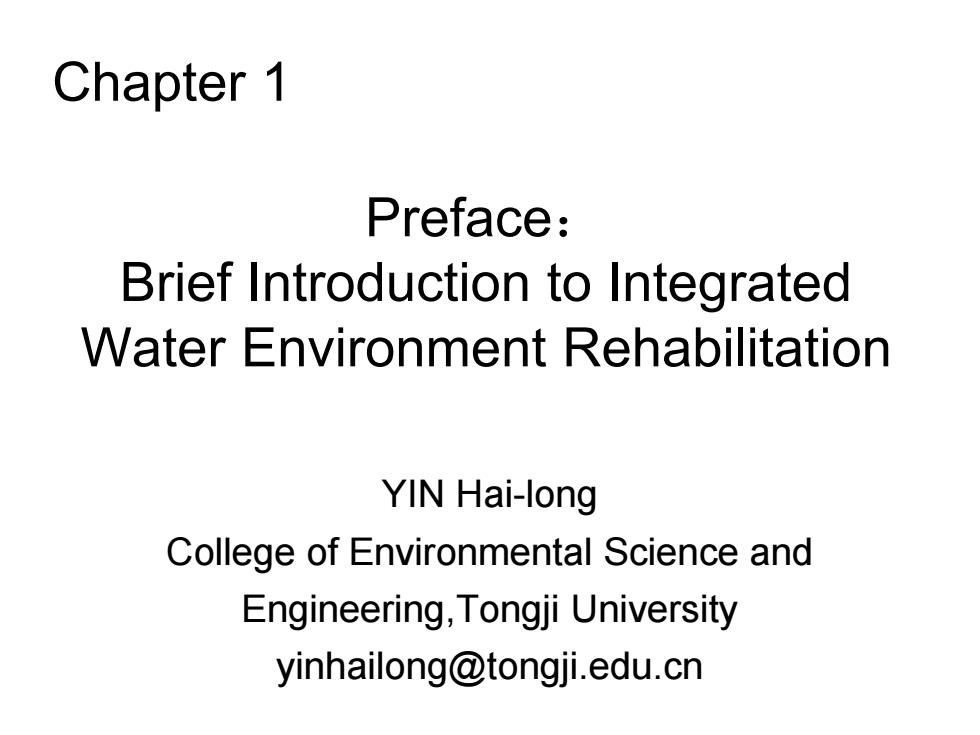
Chapter 1 Preface: Brief Introduction to Integrated Water Environment Rehabilitation YIN Hai-long College of Environmental Science and Engineering,Tongji University yinhailong@tongji.edu.cn
Preface: Brief Introduction to Integrated Water Environment Rehabilitation Chapter 1 YIN Hai-long College of Environmental Science and Engineering,Tongji University yinhailong@tongji.edu.cn
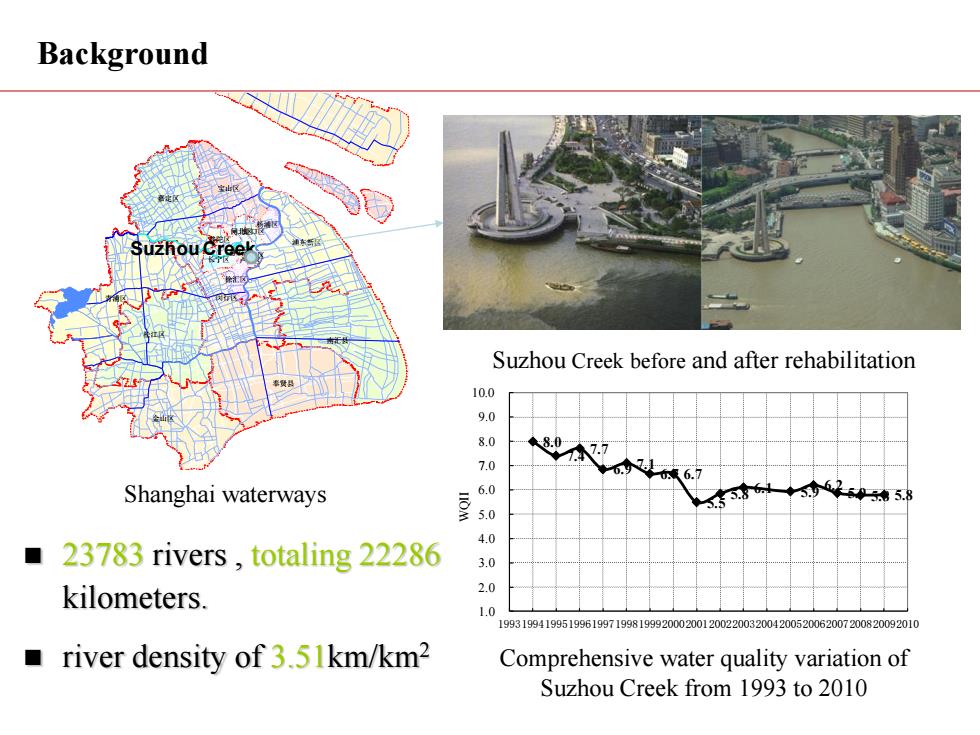
Background Suzhou creer Suzhou Creek before and after rehabilitation 10.0 9.0 8.0 7.0 66.7 Shanghai waterways 23783 rivers,totaling 22286 30 kilometers. 2.0 1.0 199319941995199619971998199920002001200220032004200520062007200820092010 ■ river density of 3.51km/km2 Comprehensive water quality variation of Suzhou Creek from 1993 to 2010
Background 卢湾区 徐汇区 长宁区 普陀区 闸北区虹口区 杨浦区 闵行区 宝山区 嘉定区 浦东新区 南汇县 奉贤县 松江区 金山区 青浦区 崇明县 静安区 Suzhou Creek黄浦区 Suzhou Creek before and after rehabilitation 8.0 7.4 7.7 6.9 7.1 6.7 6.7 5.5 5.8 6.1 5.9 6.2 5.9 5.8 5.8 1.0 2.0 3.0 4.0 5.0 6.0 7.0 8.0 9.0 10.0 199319941995199619971998199920002001200220032004200520062007200820092010 WQII Comprehensive water quality variation of Suzhou Creek from 1993 to 2010 ◼ 23783 rivers , totaling 22286 kilometers. ◼ river density of 3.51km/km2 Shanghai waterways
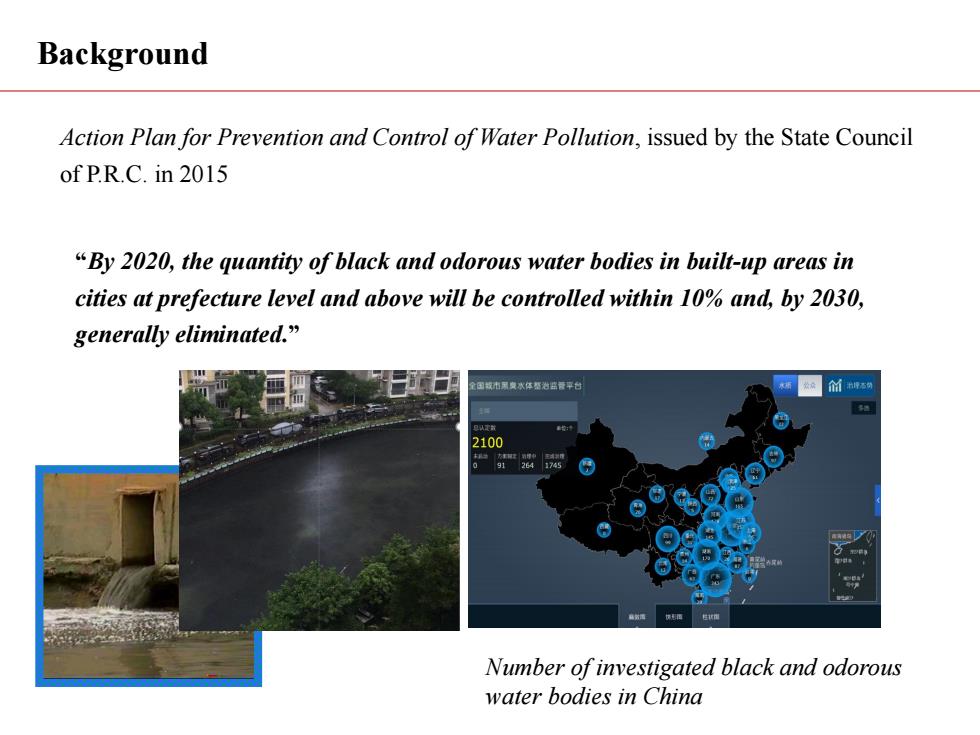
Background Action Plan for Prevention and Control of Water Pollution,issued by the State Council of P.R.C.in 2015 "By 2020,the quantity of black and odorous water bodies in built-up areas in cities at prefecture level and above will be controlled within 10%and,by 2030, generally eliminated." 2100 。器 Number of investigated black and odorous water bodies in China
Background Action Plan for Prevention and Control of Water Pollution, issued by the State Council of P.R.C. in 2015 “By 2020, the quantity of black and odorous water bodies in built-up areas in cities at prefecture level and above will be controlled within 10% and, by 2030, generally eliminated.” Number of investigated black and odorous water bodies in China
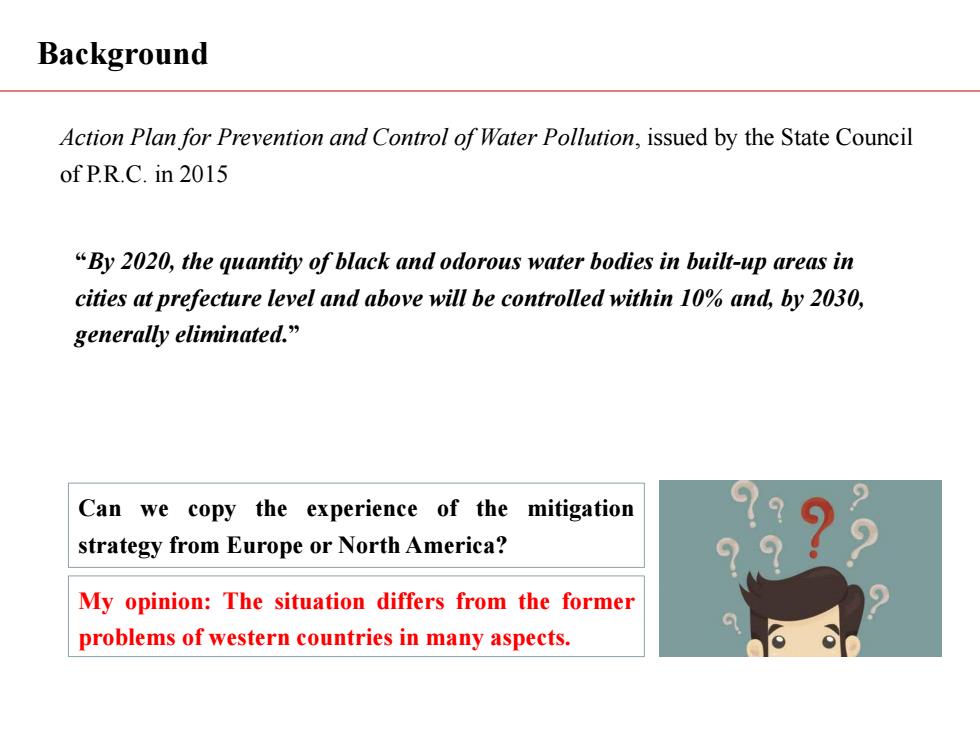
Background Action Plan for Prevention and Control of Water Pollution,issued by the State Council of P.R.C.in 2015 "By 2020,the quantity of black and odorous water bodies in built-up areas in cities at prefecture level and above will be controlled within 10%and,by 2030, generally eliminated." Can we copy the experience of the mitigation strategy from Europe or North America? My opinion:The situation differs from the former problems of western countries in many aspects
Background Action Plan for Prevention and Control of Water Pollution, issued by the State Council of P.R.C. in 2015 “By 2020, the quantity of black and odorous water bodies in built-up areas in cities at prefecture level and above will be controlled within 10% and, by 2030, generally eliminated.” Can we copy the experience of the mitigation strategy from Europe or North America? My opinion: The situation differs from the former problems of western countries in many aspects
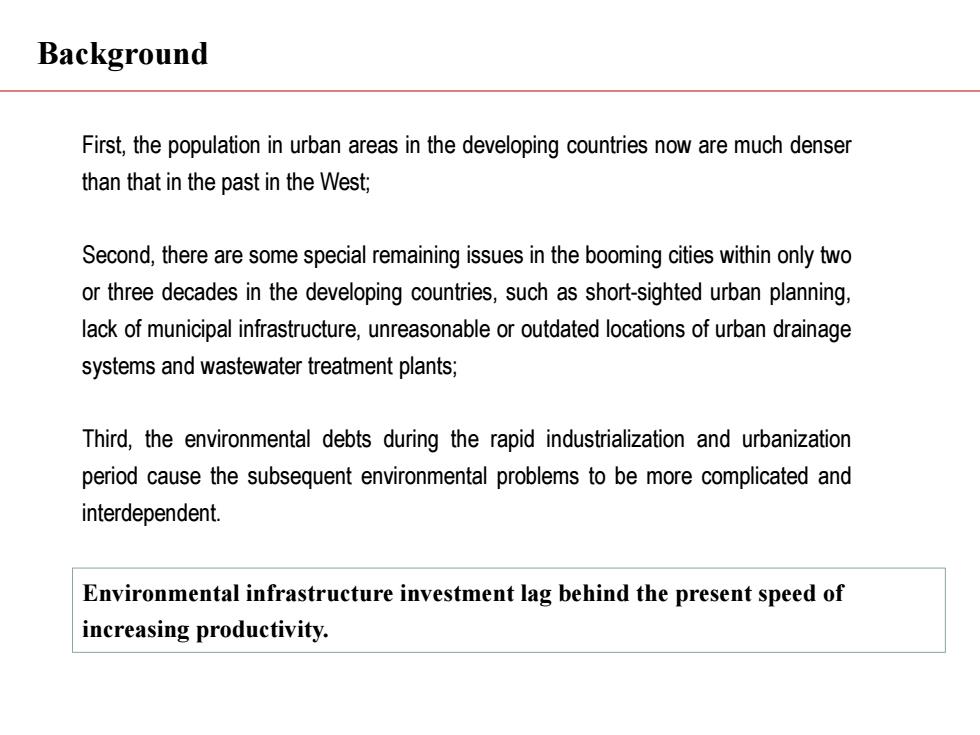
Background First,the population in urban areas in the developing countries now are much denser than that in the past in the West; Second,there are some special remaining issues in the booming cities within only two or three decades in the developing countries,such as short-sighted urban planning, lack of municipal infrastructure,unreasonable or outdated locations of urban drainage systems and wastewater treatment plants; Third,the environmental debts during the rapid industrialization and urbanization period cause the subsequent environmental problems to be more complicated and interdependent. Environmental infrastructure investment lag behind the present speed of increasing productivity
Background First, the population in urban areas in the developing countries now are much denser than that in the past in the West; Second, there are some special remaining issues in the booming cities within only two or three decades in the developing countries, such as short-sighted urban planning, lack of municipal infrastructure, unreasonable or outdated locations of urban drainage systems and wastewater treatment plants; Third, the environmental debts during the rapid industrialization and urbanization period cause the subsequent environmental problems to be more complicated and interdependent. Environmental infrastructure investment lag behind the present speed of increasing productivity